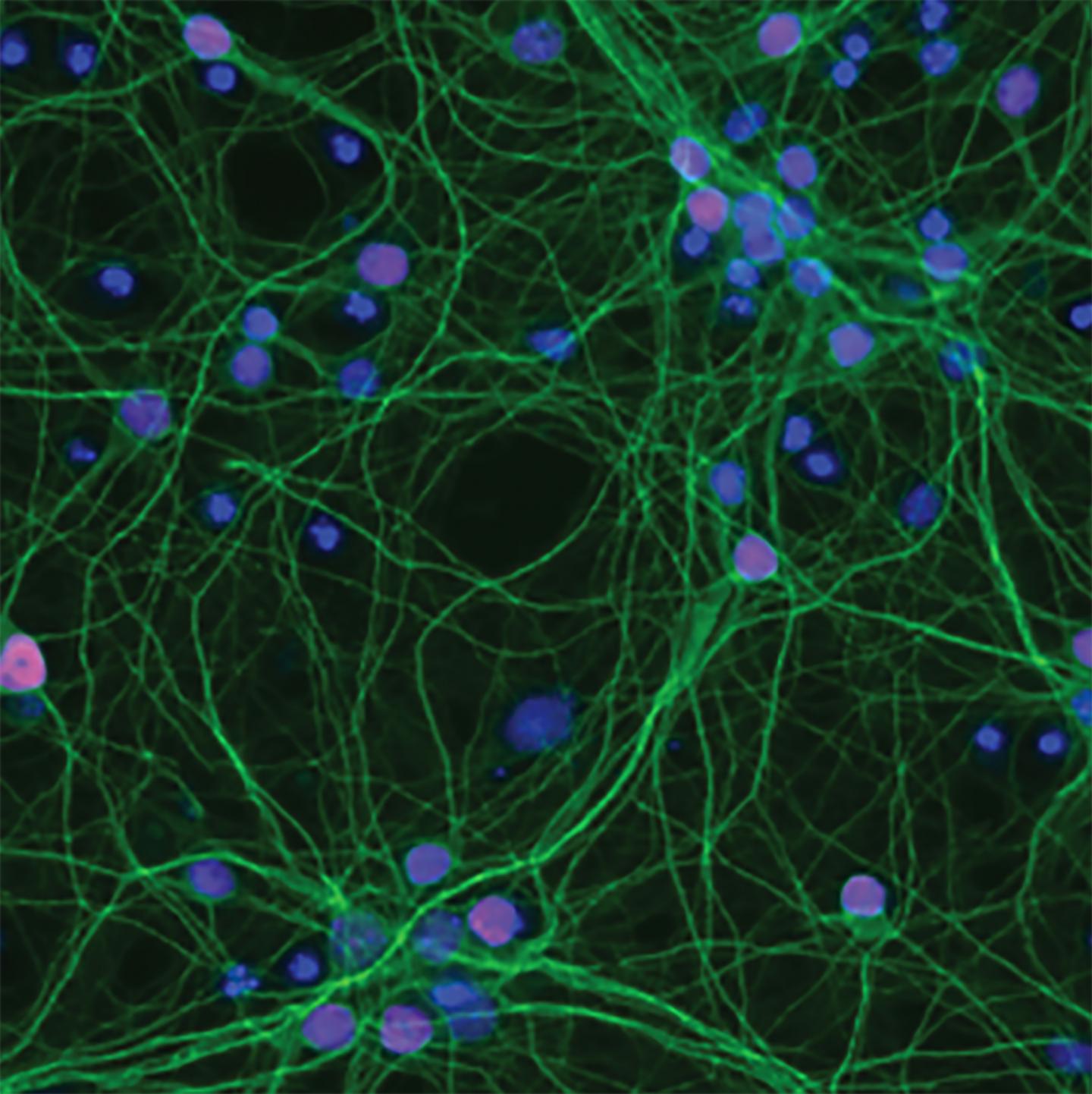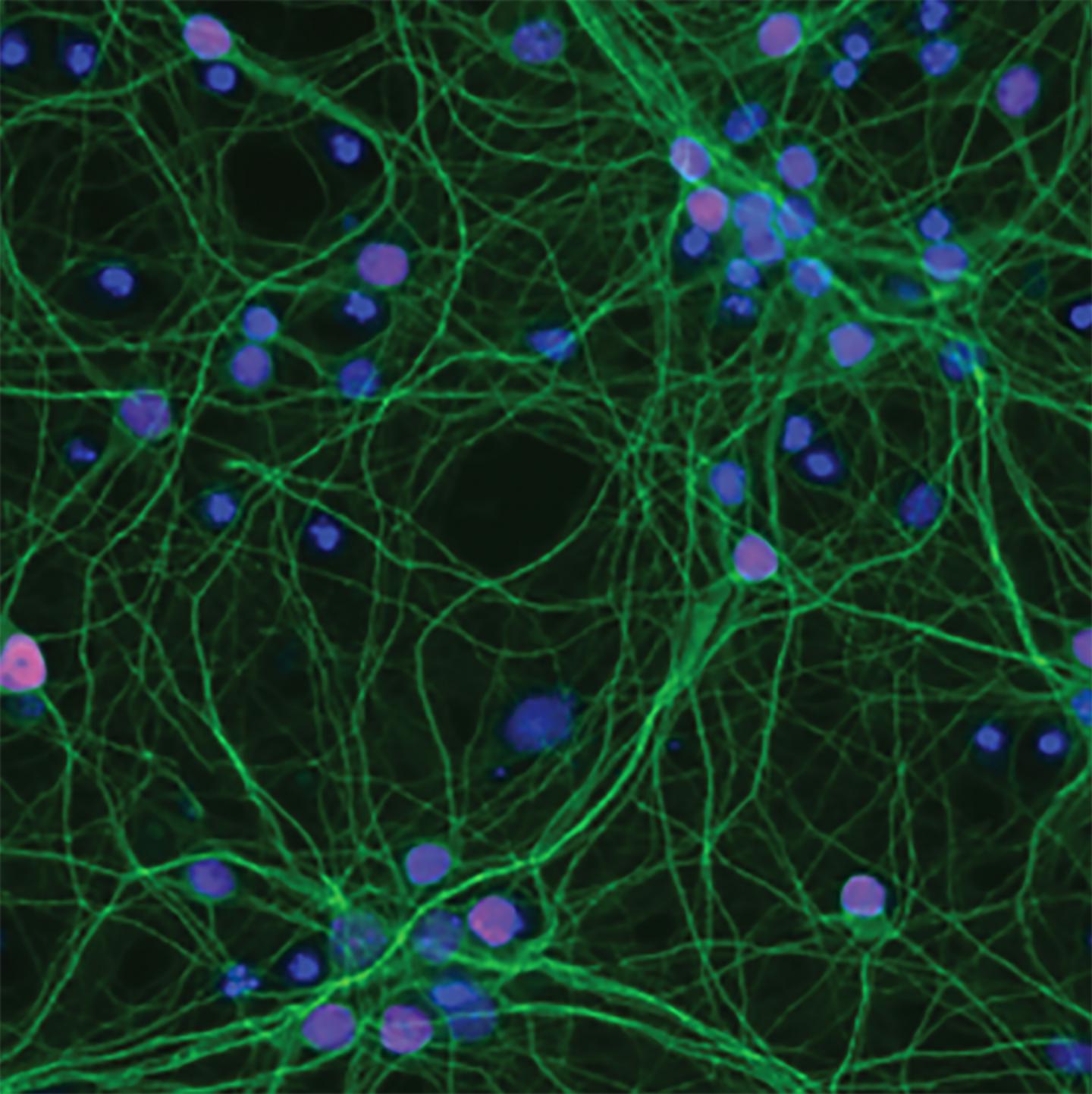
Credit: Courtesy of Gitler Lab, Stanford University, CA.
NIH-funded researchers at Stanford University used the gene editing tool CRISPR-Cas9 to rapidly identify genes in the human genome that might modify the severity of amyotrophic lateral sclerosis (ALS) and frontotemporal dementia (FTD) caused by mutations in a gene called C9orf72. The results of the search, published in Nature Genetics, uncovered a new set of genes that may hasten neuron death during the disease.
Accounting for nearly 40 percent of inherited cases of ALS and 25 percent of inherited FTD cases, disease-causing mutations in C9orf72 insert extra sequences of DNA, called hexanucleotide repeats, into the gene. These repeats produce potentially toxic RNA and protein molecules that kill neurons resulting in problems with movement and eventually paralysis for ALS patients and language and decision-making problems for FTD patients.
Led by Aaron D. Gitler, Ph.D., and Michael C. Bassik, Ph.D., the researchers used CRISPR to disable each gene, one-by-one, in a line of human leukemia cells and then tested whether the cells would survive exposure to toxic proteins derived from the hexanucleotide repeats, called DPRs. Any disabled genes that caused cells to live longer or die faster than normal were considered suspects in DPR toxicity. They confirmed that genes that control the movement of molecules in and out of a cell's nucleus may be partners. They also identified several new players, including genes that modify chromosomes and that help cells assemble proteins passing through a maze-like structure called the endoplasmic reticulum (ER). A second CRISPR search conducted on mouse brain cells confirmed the initial results. Disabling the top 200 genes identified in the leukemia cells helped neurons survive DPR exposure.
Finally, further experiments highlighted the importance of the ER genes, especially one called TMX2. For instance, the researchers could cause neurons derived from the skin cells of ALS patients with C9orf72 to live longer than normal when they silenced the TMX2 gene, suggesting it could be exploited in designing novel therapies for ALS. Decreasing TMX2 in cells caused an increase in the production of "survival proteins" that the authors hypothesized protected the cells against DPR toxicity.
Previously such studies needed a few months to find candidate genes and could only be performed on yeast, worm, and fly genomes. With CRISPR, the researchers in this study needed just about two weeks to conduct a complete search of the human genome. The results suggest that this faster and more comprehensive approach may be used to rapidly identify genes that may be involved in other neurological disorders.
###
Article:
Kramer et al. CRISPR-Cas9 screens in human cells and primary neurons identify modifiers of C9orf72 dipeptide repeat protein toxicity, March 5, 2018, Nature Genetics; DOI: 10.1038/s41588-018-0070-7
This study was supported by the NIH (NS097263, NS097850, NS069375, HD084069); the National Human Genome Research Institute Training Grant; the National Science Foundation Graduate Research Fellowship; the Department of Defense (W81XWH-15-1-0187); the Robert Packard Center for ALS Research at Johns Hopkins; Target ALS; the Stanford Brain Rejuvenation Project of the Stanford Neurosciences Institute; the Muscular Dystrophy Association; and the New York Stem Cell Foundation.
For more information:
http://www.ninds.nih.gov
http://www.nichd.nih.gov/
http://www.ninds.nih.gov/Disorders/All-Disorders/Amyotrophic-Lateral-Sclerosis-ALS-Information-Page
http://www.ninds.nih.gov/Disorders/All-Disorders/Frontotemporal-Dementia-Information-Page
NINDS is the nation's leading funder of research on the brain and nervous system. The mission of NINDS is to seek fundamental knowledge about the brain and nervous system and to use that knowledge to reduce the burden of neurological disease.
About the Eunice Kennedy Shriver National Institute of Child Health and Human Development (NICHD): NICHD conducts and supports research in the United States and throughout the world on fetal, infant and child development; maternal, child and family health; reproductive biology and population issues; and medical rehabilitation. For more information, visit NICHD's website.
NHGRI is one of the 27 institutes and centers at the National Institutes of Health. The NHGRI Extramural Research Program supports grants for research, and training and career development at sites nationwide. Additional information about NHGRI can be found at http://www.genome.gov.
About the National Institutes of Health (NIH): NIH, the nation's medical research agency, includes 27 Institutes and Centers and is a component of the U.S. Department of Health and Human Services. NIH is the primary federal agency conducting and supporting basic, clinical, and translational medical research, and is investigating the causes, treatments, and cures for both common and rare diseases. For more information about NIH and its programs, visit http://www.nih.gov.
Media Contact
Christopher G. Thomas
[email protected]
301-496-5751
@NINDSnews
http://www.ninds.nih.gov
Original Source
https://www.ninds.nih.gov/News-Events/News-and-Press-Releases/Press-Releases/CRISPR-helps-find-new-genetic-suspects-behind http://dx.doi.org/10.1038/s41588-018-0070-7





